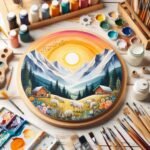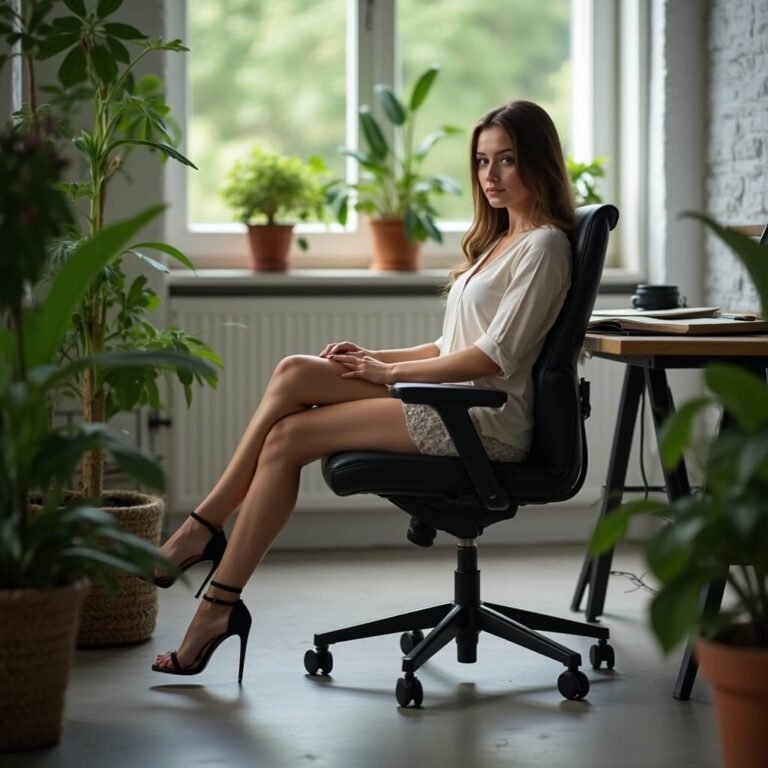Painting is a wonderful way to express creativity, and for beginners, it can be an exciting yet challenging experience. The key to getting started is understanding basic techniques that can help you develop your skills gradually. Whether you want to explore watercolor, acrylics, or oils, learning the fundamentals will set you on a path to artistic success.
Why Beginners Should Start with the Right Techniques
If you’re new to painting, jumping in without foundational knowledge can make the process frustrating. Having the right techniques not only makes painting enjoyable but also improves your final artwork. By mastering basic methods, beginners can gain confidence and refine their personal styles over time.
Essential Painting Supplies for Beginners
Before diving into techniques, you need the right supplies. Here’s a list of materials that every beginner should have:
- Paints – Choose between watercolor, acrylic, and oil paints depending on your preference.
- Brushes – Various sizes and shapes help create different effects.
- Canvas or Paper – Acrylics and oils work best on canvas, while watercolors are best on specialized paper.
- Palette – A mixing surface to blend colors effectively.
- Water or Solvent – Helps clean brushes and thin paint.
Now that you have the essentials, let’s explore the best painting techniques for beginners.
- Dry Brush Technique
The dry brush technique involves using minimal paint on a dry brush to create textured strokes. It works well for adding rough textures and highlights, making it perfect for landscapes and abstract work.
How to use this technique:
- Dip your brush lightly into the paint.
- Remove excess paint by dabbing it on a dry towel.
- Apply strokes on your canvas for a rough effect.
This technique adds depth and texture to your paintings without requiring advanced skills.
- Blending Colors
Blending is crucial for achieving smooth transitions between colors. Beginners often struggle with harsh edges in paintings, but blending solves this issue.
How to blend colors effectively:
- Use a damp brush for watercolor blending.
- With acrylics or oils, apply two colors close to each other and use a clean, soft brush to merge them.
- Work quickly with acrylics since they dry fast.
By practicing blending, beginners can create realistic shading, soft backgrounds, and seamless transitions in their artwork.
- Glazing Technique
Glazing is a technique where thin, transparent layers of paint are applied to achieve depth and luminosity. This method works best with acrylics and oils.
Steps to use glazing:
- Mix a small amount of paint with water or medium to make it translucent.
- Apply thin layers over a dry base color.
- Allow each layer to dry before adding another.
Glazing is excellent for creating realistic effects in portraits, landscapes, and still-life paintings.
- Underpainting
Underpainting involves creating a monochrome base layer before adding colors. It provides a guide for shading and composition.
How to apply underpainting:
- Use a single-color base to outline your painting.
- Add details and shadows before applying full colors.
- Build layers on top while keeping the underlying tones visible.
Underpainting helps maintain balance in artworks and prevents overuse of bright colors.
- Stippling Technique
Stippling uses small dots to create texture and shading. It’s often used in watercolor and ink-based art.
How to stipple effectively:
- Use a fine brush or sponge to make controlled dots.
- Densely packed dots create darker areas, while spaced dots lighten the effect.
- Experiment with different color layers for more dimension.
This technique works well for adding subtle details, especially in still-life compositions.
- Impasto Technique
Impasto is a thick application of paint that adds texture to the artwork. It is commonly used with acrylics and oils.
How to do impasto painting:
- Apply thick paint using a palette knife or stiff brush.
- Layer paint to build depth.
- Experiment with bold strokes for dramatic effects.
Impasto creates a sense of movement and energy, making paintings more dynamic.
- Scumbling Technique
Scumbling is a method of lightly brushing opaque paint over a dried layer to create a hazy effect.
Steps for scumbling:
- Use a dry brush with small amounts of paint.
- Apply it softly over previous layers.
- Blend gently to keep some of the underlayers visible.
This technique works well for adding light textures and softening rough areas.
- Wet-on-Wet Technique
The wet-on-wet technique involves applying wet paint onto a wet surface, which is common in watercolor and oil painting.
How to use wet-on-wet:
- Keep your canvas damp before applying colors.
- Mix colors on the canvas for fluid transitions.
- Work swiftly since colors blend quickly.
This method produces soft gradients and flowing effects, ideal for landscapes.
- Sgraffito Technique
Sgraffito is a technique that involves scratching into wet paint to reveal underlying layers.
How to practice sgraffito:
- Apply thick layers of wet paint.
- Use a palette knife or brush handle to scratch designs into the paint.
- Experiment with different tools for varied effects.
It’s a creative way to add texture and design elements.
- Negative Space Painting
Negative space painting highlights unpainted areas to define subjects.
How to apply this technique:
- Outline objects lightly.
- Paint around them instead of filling them in.
- Use contrast to emphasize shapes.
This method works well for minimalist art and unique compositions.
Final Tips for Beginners
- Practice regularly – Painting improves with consistent effort.
- Experiment with styles – Try different techniques to find what suits your preference.
- Use quality materials – Good brushes and paints make a difference in the final result.
- Don’t fear mistakes – Every mistake is a learning opportunity.
Conclusion
Starting with the right painting techniques makes the creative process smoother and more enjoyable. Whether you’re exploring dry brushing, blending, or impasto painting, each method brings a unique touch to your work. By practicing these techniques, beginners can build confidence and develop their own artistic style.
















